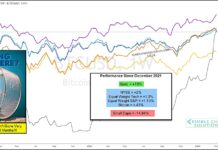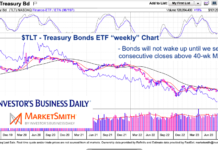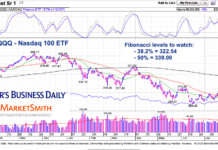“What is the best way to invest?”
“I just got this letter in the mail from (insert newsletter publisher here) saying that they know of a little-known/hidden/secret investment where I can easily earn 10% a year with little risk!”
“I can do better investing on my own based on what (insert guru name) says!”
Retired investors are finding that investing during retirement in this new economic environment we find ourselves in is much more difficult than they thought. The financial plans that were done for them 10 years ago showed that they would have more than enough money for the rest of their lives because they were told they should be able to earn historic returns (8-10% per year). They now realize that it is highly unlikely that they will average anywhere near that type of return. Their ability to stay retired and independent is in jeopardy and they are scared. As a result, they are searching for something, anything that can make up for lost time and money. In the process, even highly intelligent men and women are falling prey to the Fallacy of the Investment Newsletter.
We all receive advertisements in the mail touting the stock that is a ‘sure thing’ or talking about all the winners that the guru has had over the last several years. And, of course, every single one of those gurus correctly predicted the stock market crash of 2008, the housing bubble and the winner of the Kentucky Derby! Best of all, they are opening up their ‘road to riches’ to a lucky few people. “But hurry, these spots are going to go fast so you need to respond NOW!….and have your credit card ready.
These advertisements are highly crafted sales letters that are very convincing. Heck—I’m a money manager and understand the industry and they make ME want to subscribe. One popular publisher came out with a video called End Of America and ran television commercials advertising it. You can’t spend hundreds of thousands of dollars in advertising without making millions of dollars from it. He was and is very successful.
But successful at what? Managing money or selling a newsletter? Typically, it is the latter.
Let me share a little secret that few retirees understand. There’s no such thing as a perfect investment or a perfect investment strategy. There aren’t any ‘sure things’ in the investing world. If we learned anything from the stock market crash in 2007 and 2008 it is that even ‘safe’, conservative investments can lose value. And even gold can go down in value!
As an investment advisor, there are strict rules that govern what I can say so and do. Those writing newsletters don’t fall under the same rules as an advisor because, technically, they are not giving personal advice. That means that they can say just about anything and have it protected as free speech. They can distort the truth. They can utilize ‘creative’ interpretation of predictions they’ve made in the past. If they can do that, how do you know that the gains reported in their advertisement are real? What supporting evidence is given? Better yet, does the publisher disclose the results of all of their recommendations or are they just picking out the ones that did good? Many advertisements have some sort of recommended portfolio—what detailed information are they giving about their historic performance?
If you are interested in subscribing to an investing service or newsletter, I recommend contacting the publisher. Explain that you are interested in subscribing but you want to verify the information you’ve been given. You should request access to years’ worth of past issues. Then take your time and systematically go through them one by one. Begin with the oldest one they give you access to so you can read them in sequence. Start noting their recommendations and compare them to a historic chart for that stock. Pay particular attention to what they recommended when the stock started going down. What were they recommending to subscribers in June of 2008 and March 2009? How many stocks do they make recommendations on? How did their overall portfolio perform year in and year out?
It is one thing to focus on the return—how much money they made. Return, though, is only a part of the equation. How much risk was taken in pursuit of that return? When it comes to investing, ‘draw-down’ is the measure of the declines (negative deviation) and it is a good ‘pain’ indicator. For instance, recently the S&P 500 generated over a 12% gain with a maximum drawdown of only 6%. A drawdown of half the gain in an equity investment is pretty good. On the other hand, a well-known bond fund recently turned in a 1% return for 1H2013 with a maximum drawdown of 5%. That’s a lot of pain for not very much gain. Closely tracking the drawdown associated with the individual and portfolio recommendations of a newsletter will provide a more accurate picture of performance than focusing on gain alone.
There may be newsletters out there that are worth subscribing to, but realize that just like any other ‘advisor’, they aren’t going to be right all the time. Be skeptical and verify their accuracy. Unfortunately, you can’t always believe what you hear or see when it comes to financial advice. You should always have a healthy dose of skepticism.
The reality is there aren’t any ‘sure things’ when it comes to investing. As the disclaimers say, “All investments have risk and past performance is not an indication of future performance.” The people running Hedge Funds, managing mutual funds or serving as portfolio managers are some of the smartest minds in the world. They battle it out with others just like them daily. Do they all succeed every day? No. Do they know which direction the market is going the next 6 months? No.
The truth is no one knows whether the markets will go up or down or sideways. Nor do the experts know what our economy will do the next year. They don’t know whether we will see hyper-inflation, inflation, stagflation or deflation over the next 5 years. They can make a prediction. They may have an opinion. Another word for ‘prediction’ and ‘opinion’ is ‘guess’. But it doesn’t sound too authoritative when an ‘expert’ says “My guess is that that market will go up.” That doesn’t sell newsletters or magazines or commercials. But it is the truth.
Successful investment professionals have spent years studying, analyzing and formulating strategies in order to create a repeatable process where the probability of making money is in their favor. They don’t rely on their ‘gut’. They realize that there aren’t any sure things. Successful investing takes a lot of time and hard work.So don’t be fooled by what you might read or hear or watch when it comes to investing advice. If it sounds too good to be true then it probably is.
Common Sense Advisors does not offer investment advice via this medium. Under no circumstance whatsoever do these postings, opinions, charts, or any other information represent a recommendation or personalized investment, tax, or financial planning advice. Learn more about our firm at www.commonsenseadvisors.com
Twitter: @JeffVoudrie
Any opinions expressed herein are solely those of the author and do not in any way represent the views or opinions of any other person or entity.








